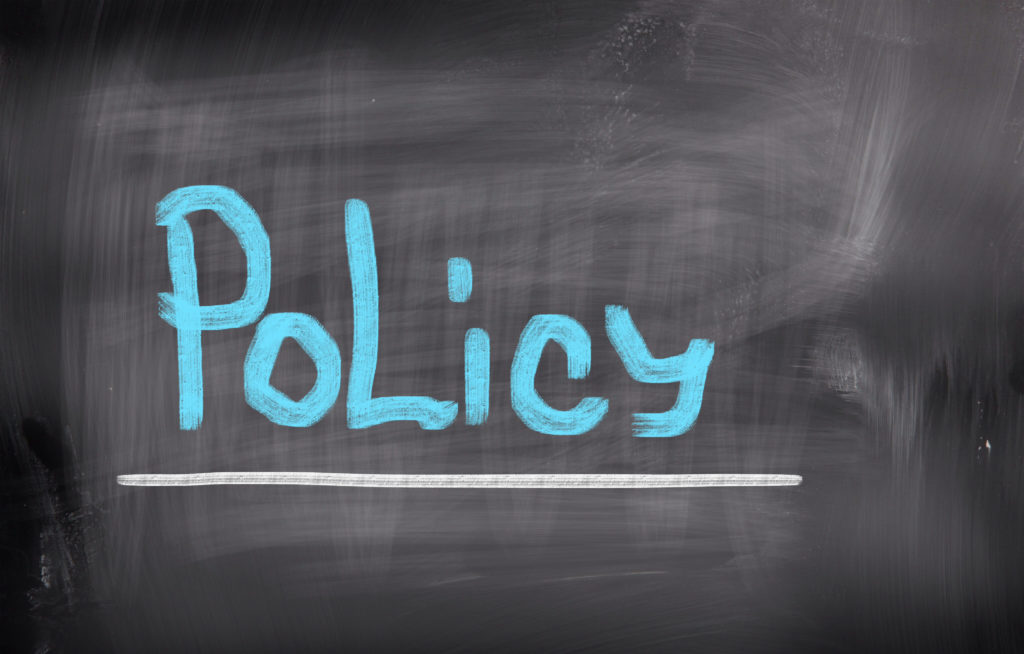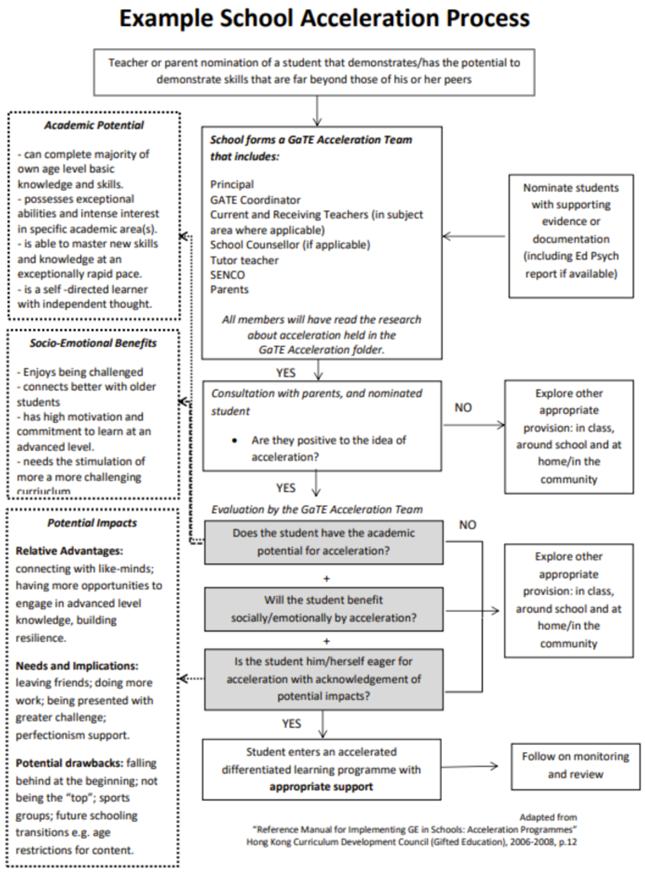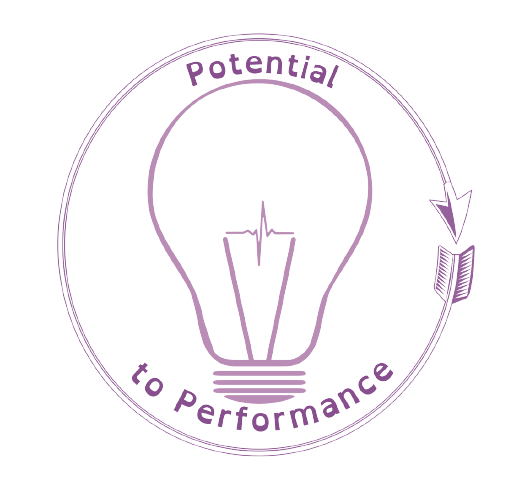
Acceleration, grade-skipping, dual enrolment, jumping, skipping…Whichever name it is called, it is an effective provision for gifted students. And as ability grouping becomes more and more out of favour across Aotearoa New Zealand, it is an option that does need to be discussed for our academically gifted children.
TKI Gifted lists the following forms of acceleration:
- Early entrance to University (either full time or in some subjects)
- Curriculum compacting (pre-assess and reduce what is being taught)
- Telescoping (e.g., taking 18 months to complete 2 year’s worth of work)
- Subject acceleration (only being accelerated in some subjects and staying with their peer group for the rest of the time)
- Full-year acceleration (skipping one or more years levels)
- Dual enrolment with Te Kura or a University (consider also Massive Open Online Courses like Coursera, Future Learn, EdX etc.)
- Acceleration in extra-curricular activities
- Participating in acceleration in extra-curricular activities
- Remaining for an extra year at school and taking up other opportunities.
As noted above, schools need to keep in mind that students are able to be accelerated by year levels or in single subjects based on individual needs.
Policy and Processes
Like most aspects of education, a policy gives a strong foundation for school leaders, teachers and whānau in regard to making a decision about acceleration. Many school leaders are concerned that once one child is accelerated then it will “open the floodgates” so to speak. In other schools, acceleration is done “on masse” with multiple students going forward without consideration of their individual needs.
At the heart of any supportive acceleration process needs to be – does the child want to be accelerated? If the answer is no, then an Option B needs to be sought. If it is a yes, then a supportive process needs to be put into action. I have included in this Blog a sample Acceleration Policy that is able to be adapted. This and the flowchart can be used as a framework for developing your own kura’s policy and procedures in regards to a child skipping a full year level. Keep in mind that there are many forms of acceleration and you need to explore with each individual students what will meet their learning, social and emotional needs best.
Mentoring
If a child is accelerated, then it is important that they have someone that they can talk to and that will keep an eye on their progress. This could be the SENCO, Gifted Coordinator, LSC, counsellor or it could be a teacher that they are close to. Ideally this relationship would continue until the child leaves school.
The purpose behind mentoring is to give them a sounding board for any learning, social or emotions needs that may develop during the acceleration period. For example, struggling with not finding things easy or making social connections. Or it could be that they are still finding the work too easy and need someone to advocate for more differentiation on their behalf.
Drinking, Driving and Dating
Ann Easter’s research highlighted these “3Ds” as being issues when students enter University early. Adults who have been through acceleration also talk about the isolation they felt during puberty due to not developing in the same way as their school peers.
These potential issues do need to be discussed before accelerating the child and there does need to be mentoring to support the child during these key periods of development.
Other aspects to be aware of:
- Research on acceleration tells us that there is less harm in accelerating a student and then putting them back in their original class than to not accelerate them in the first place – providing the student wanted to be accelerated.
- We build social skills through those with the same intellectual ability as us, do not think that a child is too immature to be accelerated. They may be exactly what they need in order to develop their social skills.
- If accelerating into dual enrolment at university, double check with the Career’s Advisor around what papers to avoid. Some courses (e.g. medicine) will not let you enter the programme if you have done a paper early. To be on the safe side, stick to arts papers for dual enrolment and triple check career pathways.
- Media Studies and English teachers in secondary schools may need to adapt content for accelerated students. They legally cannot show age related material to younger students even if they have parental permission.
If you want to dig more into the research around acceleration check out:
- ‘Time on my side‘ – Experiences of accelerated students who entered university early in Aotearoa New Zealand – Ann Easter (University of Waikato)
- ‘Allowing them to flourish‘ – Parents support the leadership, academic and administrative challenges of full-year acceleration of their children at high school – Janna Wardman (University of Auckland)

Example School Acceleration Policy
1. Review date
2. Rationale/purpose
The overall aim of this policy is to maximise the educational outcomes of schooling for gifted students who may benefit from acceleration.
[School name] recognises that the needs of gifted students may differ cognitively, socially, and/or emotionally from other students and that planned provision and/or support to meet its responsibility to assist students to turn their potential into performance.
In addition, we recognise that, in order to meet the needs of some intellectually gifted students, it will be necessary to accelerated their class either by year level or in individual support.
While our teachers endeavour to provide extension and enrichment to our intellectually gifted students, for some they will require more than what can be given alongside their same aged peers. Positive social and emotional effects of acceleration on students are well documented and a student’s social and emotional maturity is linked more to their mental age rather than their chronological age. Benefits of acceleration include improved motivation, confidence and performance, and the prevention of disengagement and school refusal.
The National Administration Guidelines (NAGs) for the provision of education to students in New Zealand require each Board of Trustees, through the principal and staff, to comply with requirements to meet the learning needs of all students. This is also in line with the National Education Goals (NEGs) 6 and 7 that outline the need for programmes to meet individual needs and students receiving appropriate support.
Some possible characteristics of acceleration candidates:
- They have been identified as part of the school’s gifted identification process and their level of achievement significantly surpasses same-aged peers.
- The student academically demonstrates levels of skill well-above the average students in the level they are currently in. Their Zone of Proximal Development cannot be easily met within their year level classroom.
- The student deliberately seeks out company of older students to talk to and/or adults.
- The student is a gifted underachiever who does not see value in the work that they are being given as it is far below what they are capable of doing.
3. Acceleration Procedures
The purpose of acceleration is to enable teacher to provide a responsive learning environment which will meet the needs of individual students.
For accelerated students:
Acceleration should be considered on a case-by-case basis and involve input from all key stakeholders with the most prominent voice being that of the student.
Acceleration processes should:
- Be inclusive.
- Be a flexible and continuous process to allow for recognition of gifted students who may need acceleration that may be recognised at any stage of a student’s education.
- Utilise information from a variety of sources, including the classroom teacher, observation, assessment data as well knowledge gained from others – e.g., parents, whānau, peers, tutors, and other teachers.
- Be monitored and reviewed to ensure that it continues to meet the student’s needs.
- Involve open communication between parents, whānau/caregivers, students, teachers, the Principal and the BoT.
- Use a team approach to coordinate the acceleration process.
Receiving classes/teachers:
Students in the receiving class will need to be prepared by the classroom teacher. They need to understand/ acknowledge the reason behind the student being included in the class if there is a significant difference in age or physical development, or there is a change from a previous school year group.
The teacher/s understand and acknowledge the need for acceleration and is/are aware of how to adapt their provision to fill gaps and meet socio-emotional needs. All receiving teachers need to be in the initial acceleration team meetings.
Refer to the Acceleration flowchart below for guidance on the process:

